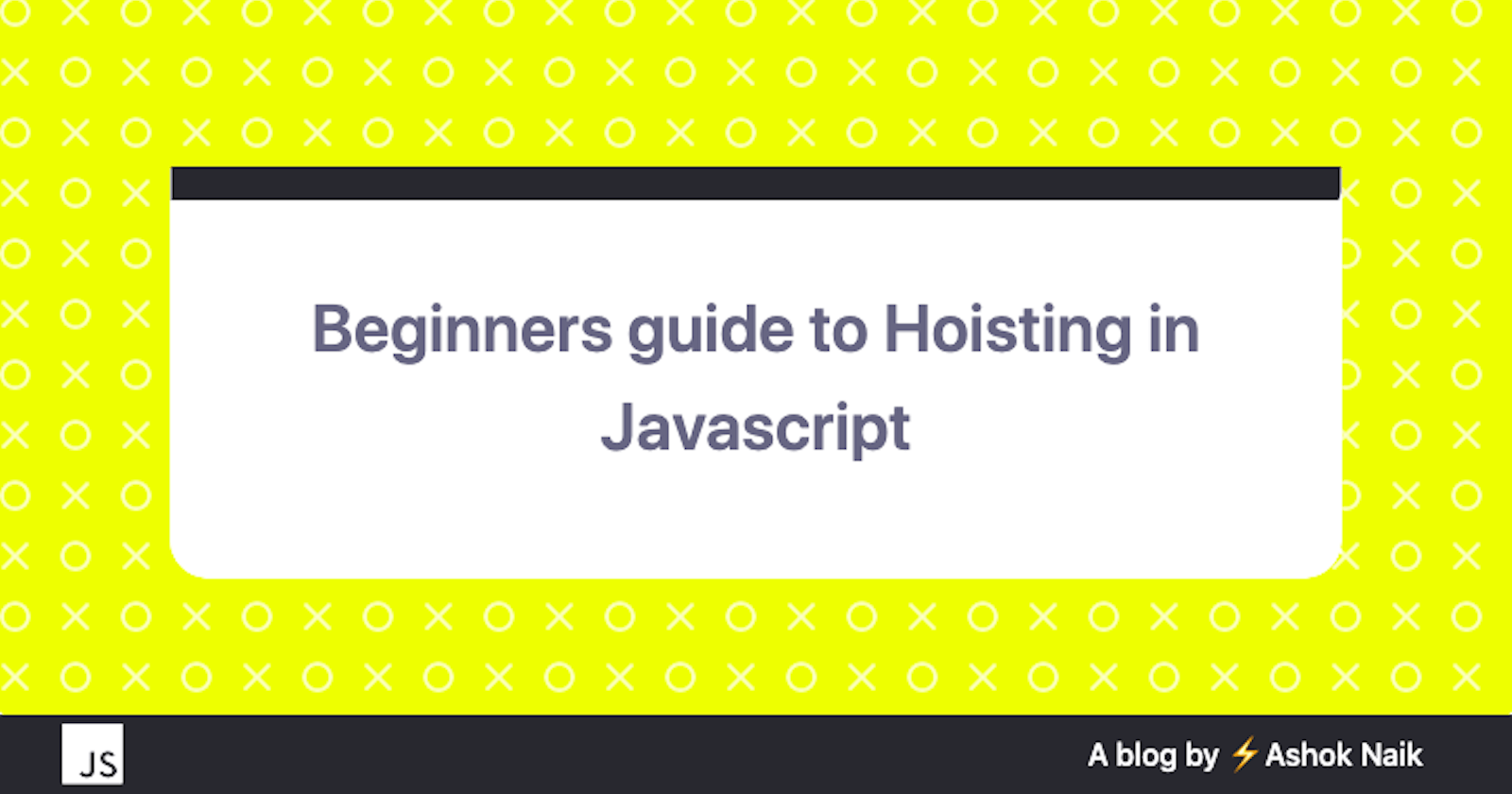Hoisting is one of the most commonly asked concepts in a Javascript interview. In this blog, we’ll find out how the hoisting mechanism occurs in JavaScript.
Hoisting is a mechanism in which variable and function declarations are physically moved to the top of your code(hoisted).
let's go through a simple example to understand hoisting
function blogName(name) {
console.log("Title of the blog is " + Hoisting);
}
blogName("Hoisting");
/*
The result of the code above is: "Title of the blog is Hoisting"
*/
The above example is how we expect the code to work without any issues. A function declaration followed by the call to the function.
let's take another example where we call the function before we declare it
blogName("Hoisting");
function blogName(name) {
console.log("Title of the blog is " + Hoisting);
}
/*
The result of the code above is: "Title of the blog is Hoisting"
*/
In the above example gives us the same output even though the function is called before declartion. This is because the function blogName() was hoisted to the top.
Note: JavaScript only hoists declarations, not initialization
blogName("Hoisting");
var blogName = function(name) {
console.log("Title of the blog is " + Hoisting);
}
/*
The result of the code will be Uncaught TypeError: blogName is not a function
*/
All you need to know Hoisting is a JavaScript mechanism where variables and function declarations are moved to the top of their scope before code execution.
That's All folks, Thank you.
